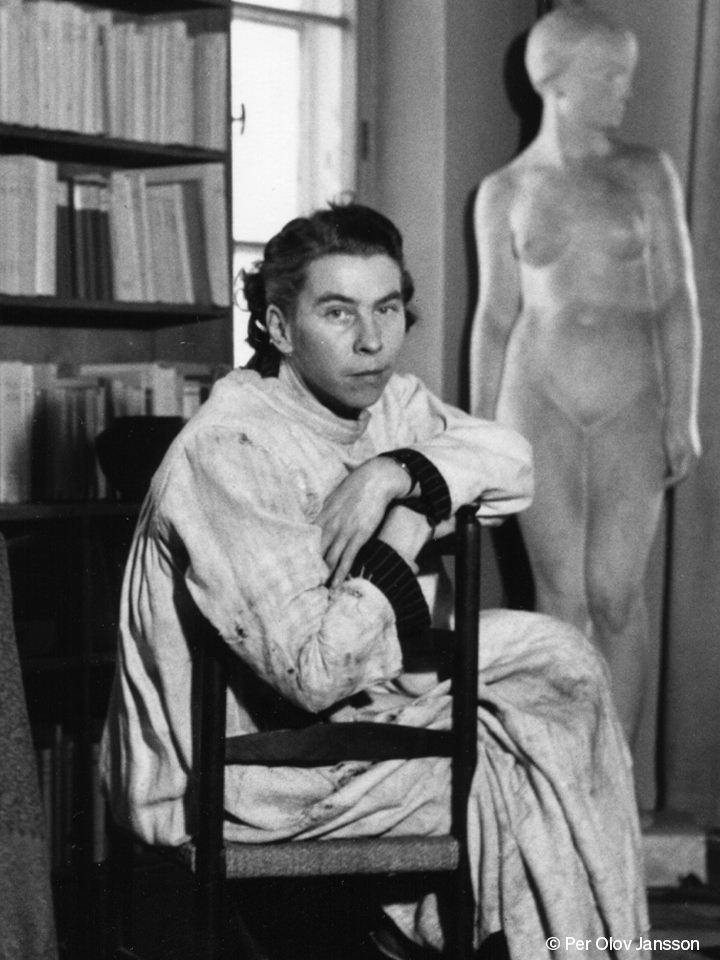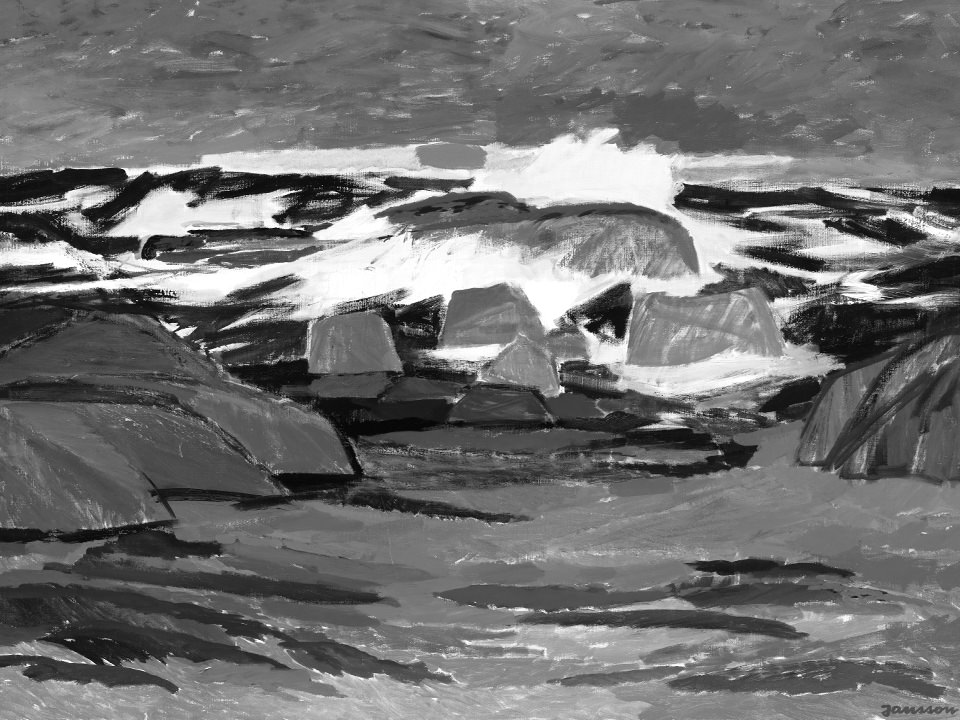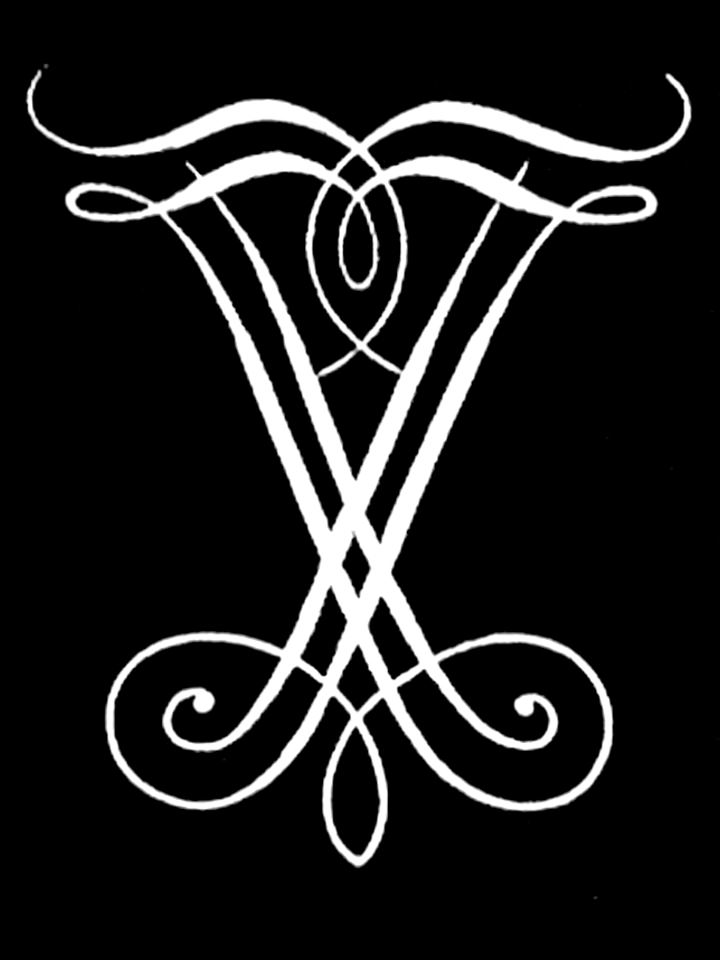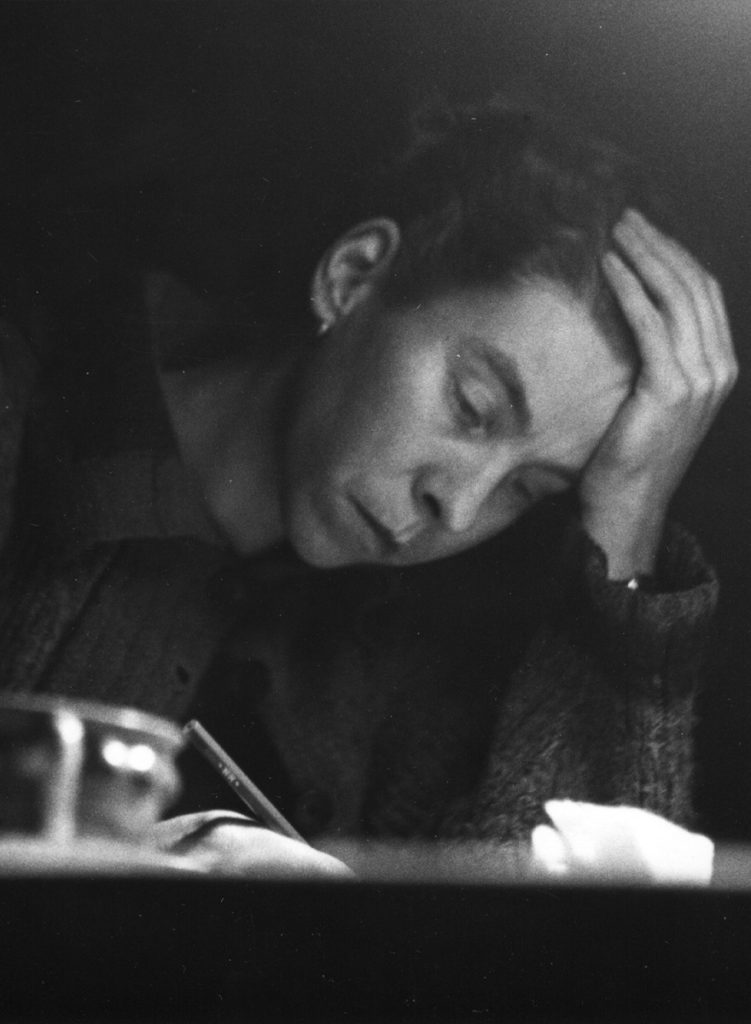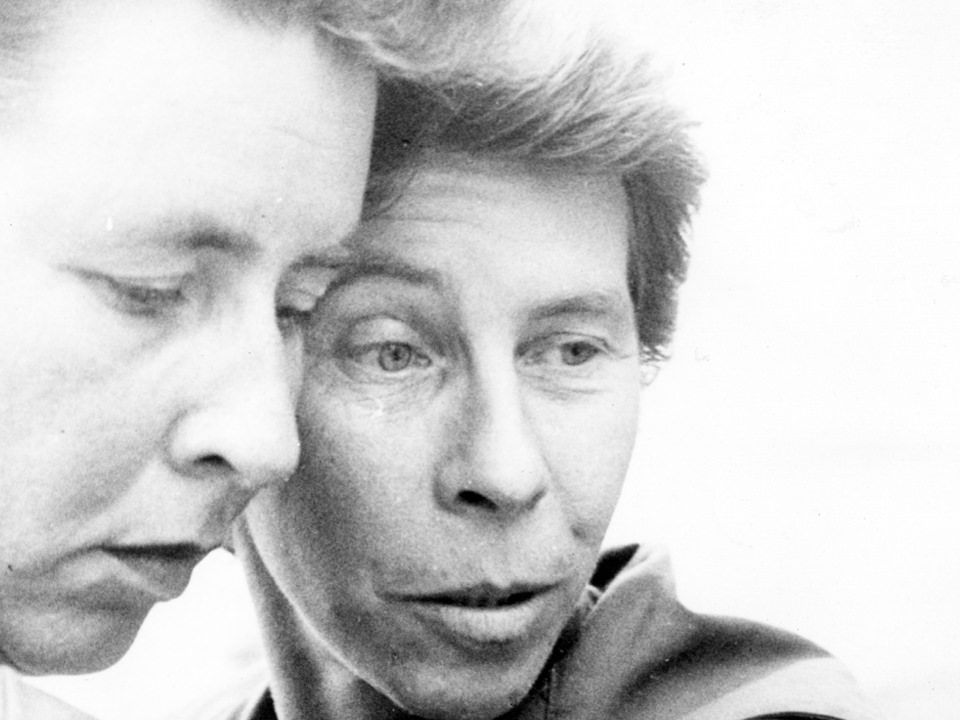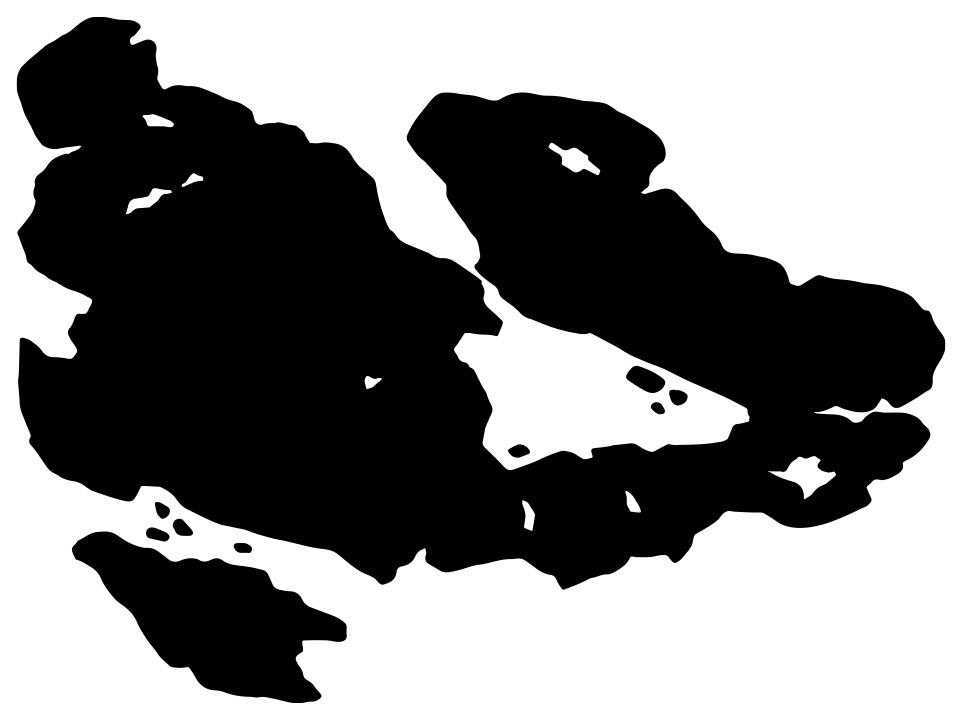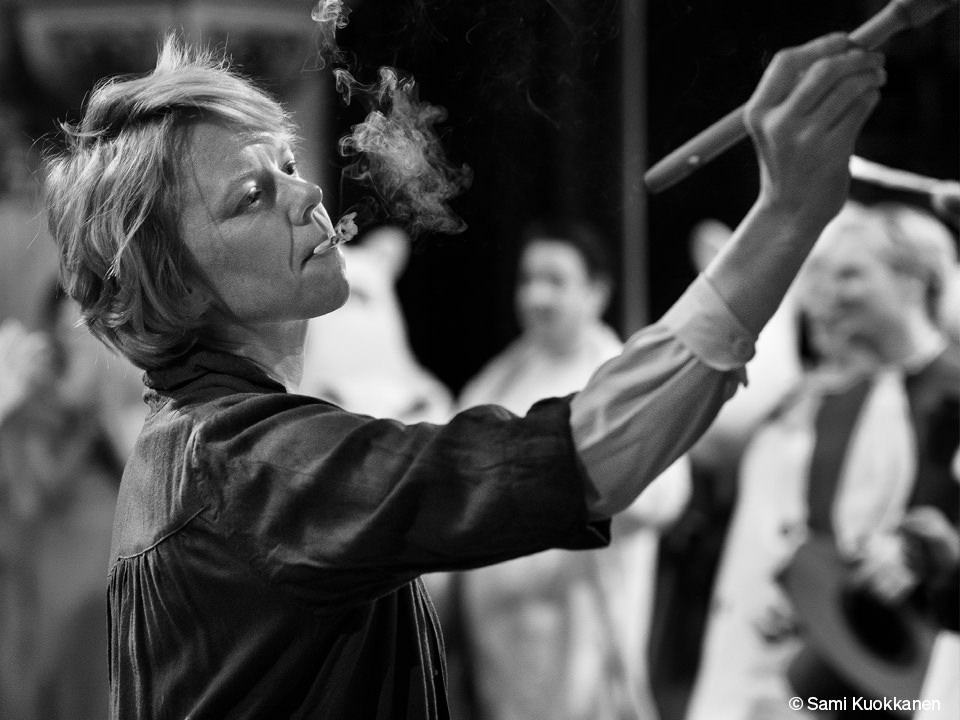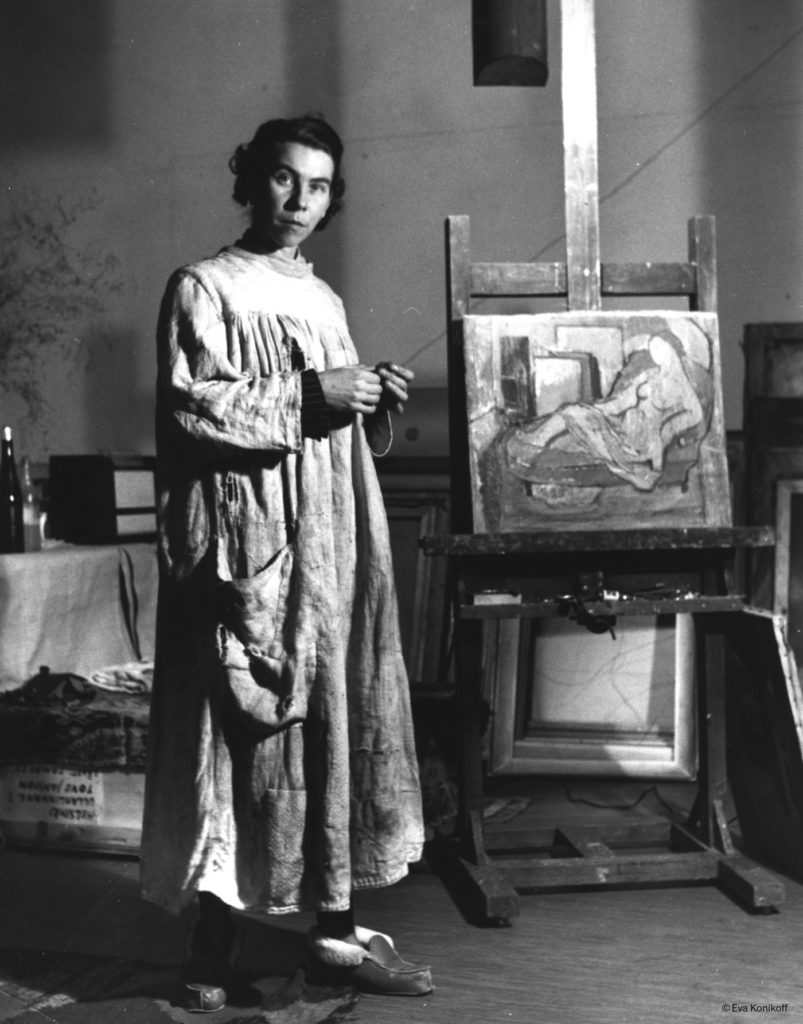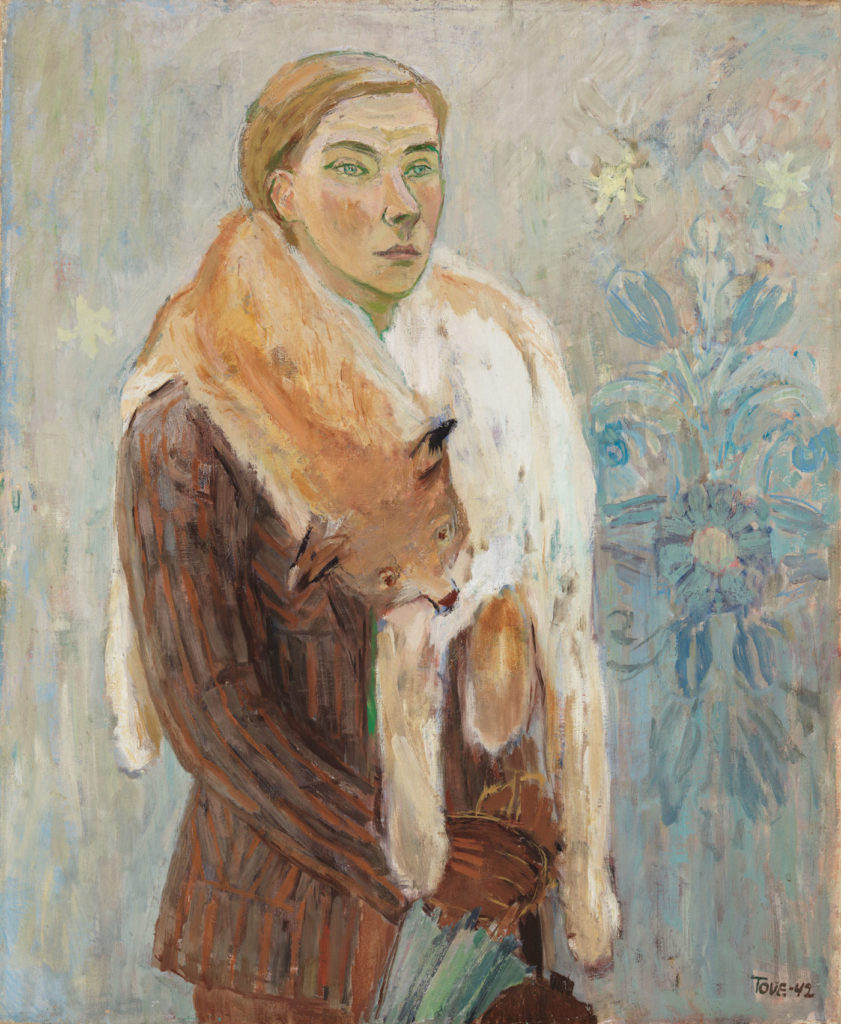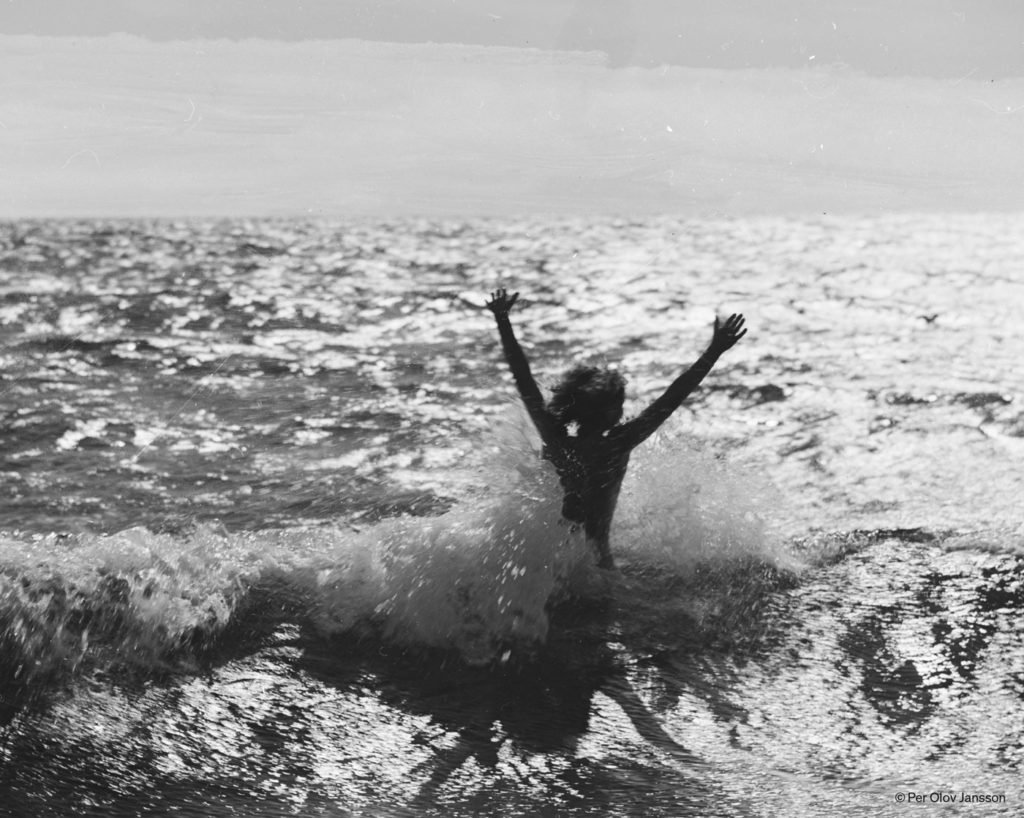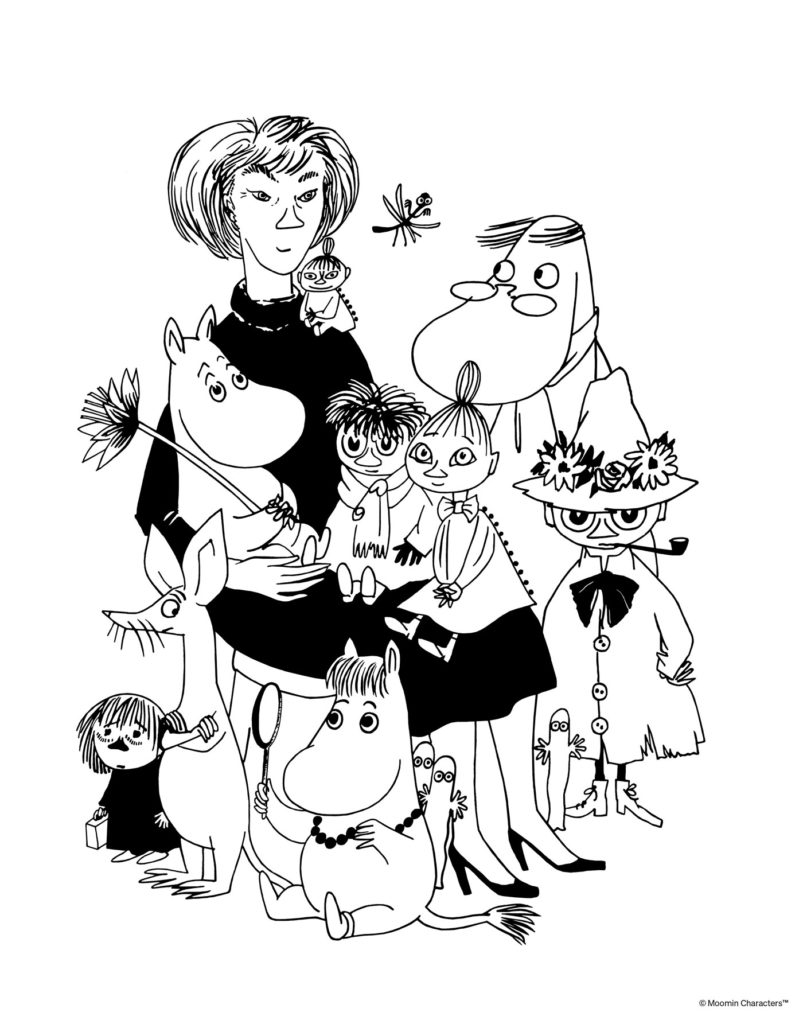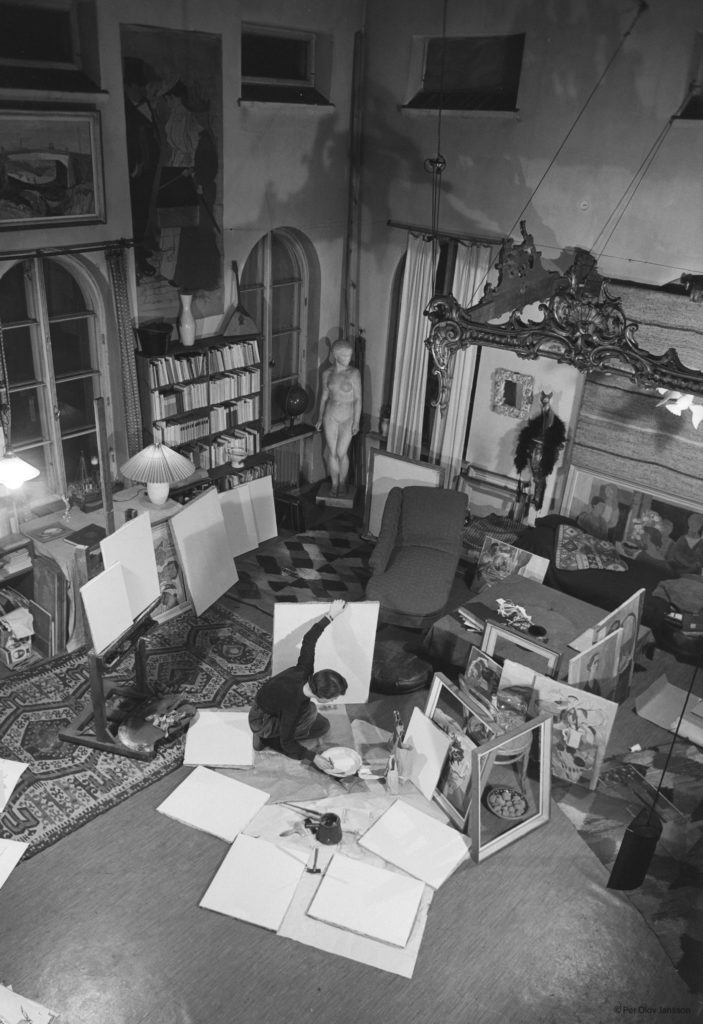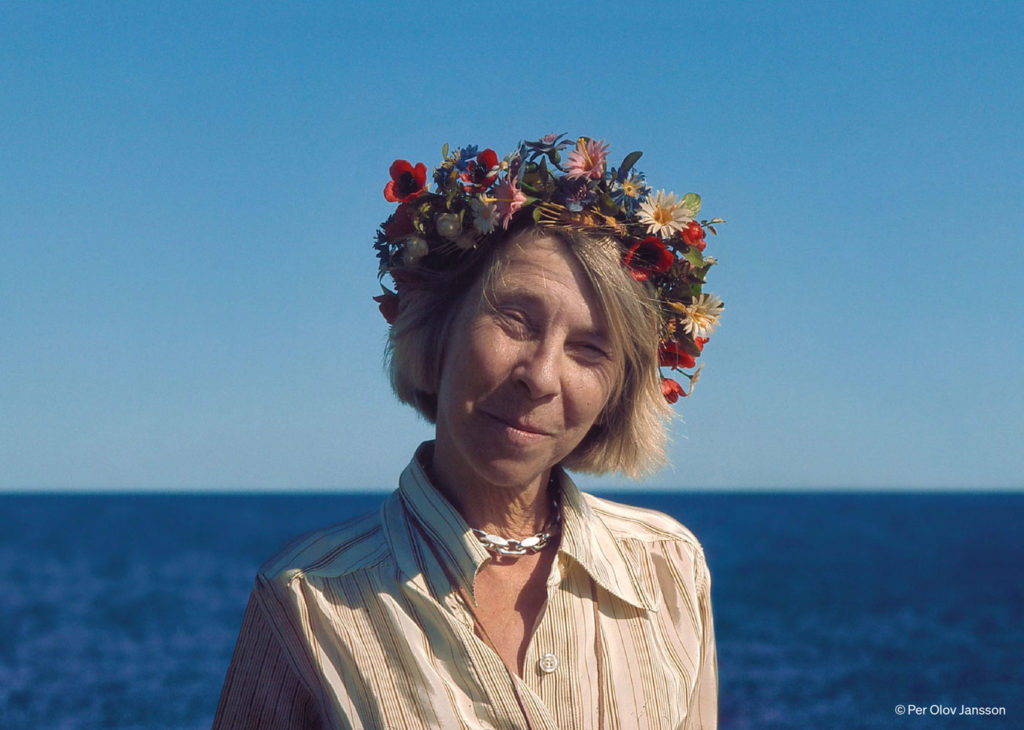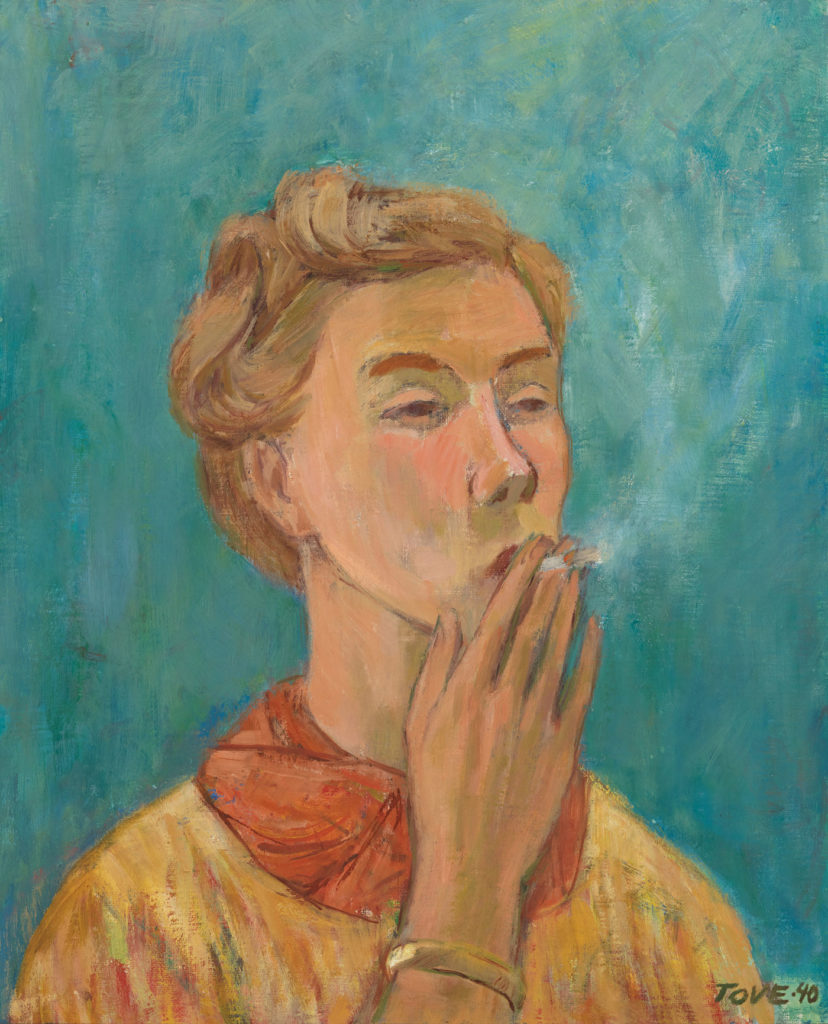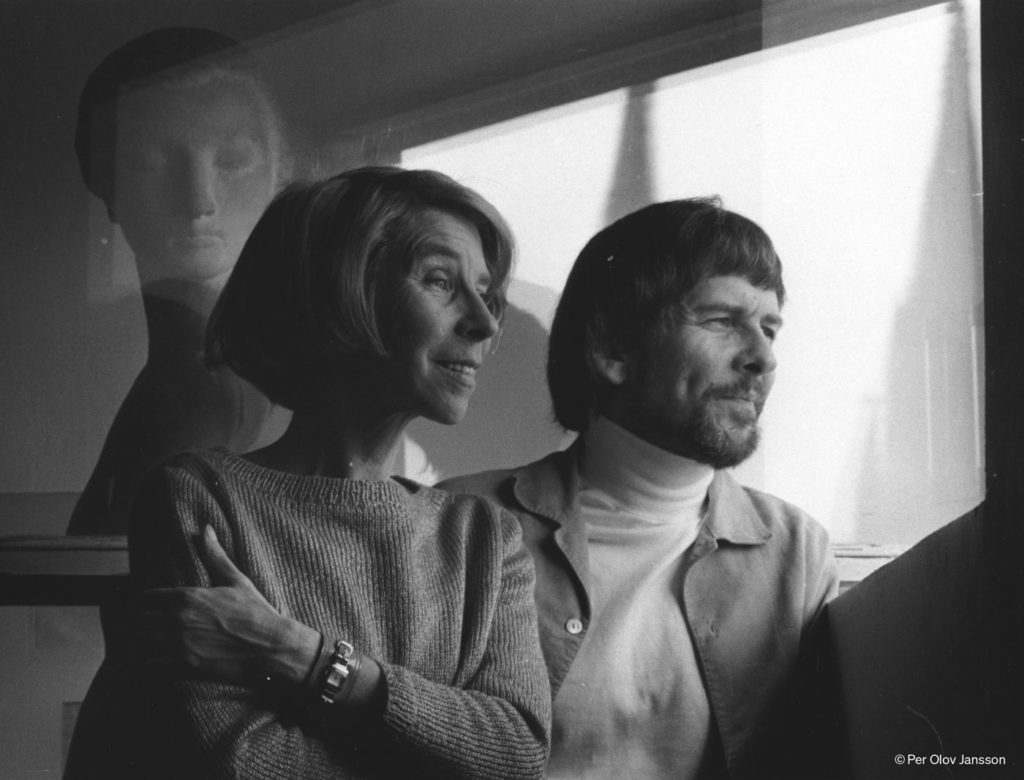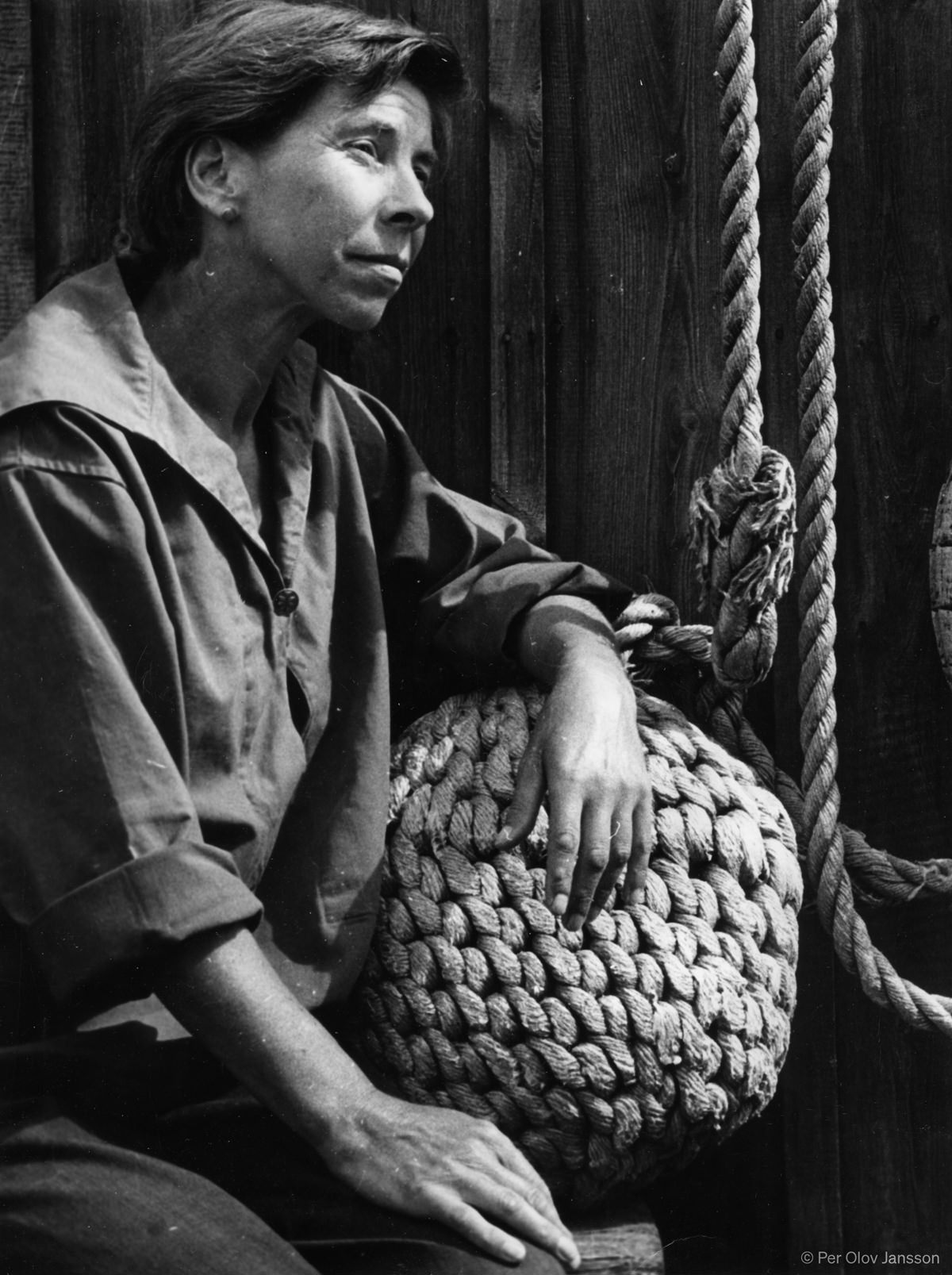
Tove Jansson (1914–2001) was a Finnish writer and artist whose illustrated books for children, and fiction for adults, have become famous throughout the world. She is best known as the creator of the Moomin stories for children – as well as the Moomin comic strips and picture books that followed – and for The Summer Book, a novel widely considered a classic of Nordic fiction. Yet she excelled in many different literary and artistic forms, achieving early fame as a promising young painter and cartoonist, and, later, as the author of novels and short stories, poems, and plays for radio and theatre. She even wrote songs.
Tove Jansson’s approach to work, just like her approach to life, was wholehearted and vital. She would strive for originality and freshness, creating prose and pictures imbued with colours, a talent for storytelling, and values that were both humane and inclusive. Her love of nature is a constant theme, especially of the sea that surrounded the Finnish island where she spent her summers.
Tove Marika Jansson was born on August 9, 1914 and died on June 27, 2001. Her grave is situated at Hietaniemi cemetery in Helsinki, Finland.
Dive deeper and follow the highlights and turning points of Tove Jansson’s career through the visual timeline here or in text form below.
The Moomintrolls
In 1945 Tove Jansson wrote and illustrated a gentle fantasy for children, The Moomins and the Great Flood, a story she created to distract herself from the wartime devastation of Helsinki. It would take two further books, Comet in Moominland and Finn Family Moomintroll (known as The Happy Moomins in the USA), for the Moomins to become established as a series, with a readership spreading far beyond Finland. By the time she published the last novel in the Moomin series, Moominvalley in November, in 1970, the books had become an international phenomenon, translated into some 60 languages. Their beautiful ink-line drawings and character designs are today known and loved by millions.
Tove Jansson was an author who showed great confidence in the imagination and understanding of children. Her Moomin books would demonstrate this in the range of emotions they covered. Whilst the first Moomin titles were full of warmth, charm and adventure, the last four, beginning with Moominland Midwinter, would explore more complex themes of isolation, uncertainty and yearning. These were feelings the Moomins would overcome, using their unique brand of kindness and resourcefulness, offering solace and consolation for readers young and old.
At the same time, as she was working on the Moomin novels, Tove Jansson experimented with full-colour picture books, creating innovative ways of storytelling, using verse and a vibrant palette of colours. Her three picture books – The Book about Moomin, Mymble and Little My (1952), Who Will Comfort Toffle? (1960) and The Dangerous Journey (1977) offer some of the most iconic Moomin images. The Book about Moomin, Mymble and Little My is the most visually exciting of them all, creating a journey through the forest in a succession of cut-out pages.
The Artist
While the demands of the Moomins increasingly took up most of her time and attention, Tove Jansson’s first and enduring love was as a fine artist. She studied art in Stockholm, Helsinki and Paris, where she showed precocious talent as a painter and muralist and gained various commissions for public works and solo exhibitions.
Her style, influenced by post-Impressionism and the 1930s ‘School of Paris’, was characterised by its focus on colour, form and light and implicit storytelling. Many of her paintings are displayed at the Helsinki Art Museum and have been the subject of major international exhibitions. Her murals can be seen in Finland at Helsinki, Hamina and Kotka.
The Illustrator
Much of the Jansson family income derived from Signe Hammarsten Jansson’s illustration and design work; Viktor Jansson’s work as a sculptor being largely dependent on winning public competitions. Tove Jansson was keen to help her mother shoulder this financial burden. At the age of fifteen, the chance came when her mother was called away to Stockholm and arranged for her to take over a commission for the cover of a children’s magazine, Lukentus.
By the time she reached her twenties, Tove Jansson had established her own freelance career as an illustrator and cartoonist. In 1941 Sweden recognised her undaunted wit and talent by nominating her the most humorous of the Nordic caricaturist. Her political cartoons for the magazine Garm during the Second World War created a stir when she courageously lampooned both Hitler and Stalin on the covers, signing each with her own name.
In the post war years, Tove Jansson’s Moomin books – and syndicated Moomin cartoons – would take this fame to an entirely new level. In addition to illustrating her own stories, Tove Jansson was commissioned to illustrate classic texts. The most notable were her illustrations of the 1960s Swedish editions of JRR Tolkien’s The Hobbit and Lewis Carrol’s Alice in Wonderland.
Today, there is a museum dedicated to Tove Jansson’s original Moomin artworks in Tampere, Finland. Opened in 2017, it has become one of the country’s most popular visitor destinations.
The Cartoonist
In 1947 Tove Jansson was commissioned by Ny Tid, a left-wing periodical (edited by Atos Wirtanen, Tove’s lover at the time), to produce a Moomin cartoon strip. Her first cartoon story, Moomintroll and The End of the World, was serialised from 1947–48. Then in 1950, following the breakout success in Britain of Finn Family Moomintroll, she was approached by London’s highest circulation newspaper, The Evening News, to create a daily cartoon strip. For Tove Jansson, this was a life-changing commission, providing her with the financial security she longed for. The first Moomin strip was published in September 1954 and promoted via a London-wide billboard campaign. ‘The Moomins’ engaging plots, clarity of line, humour and playfulness (the strips often ‘broke out’ of their frames) proved a triumph and the cartoons were published in 40 countries, reaching over 20 million readers.
Yet Tove Jansson felt increasingly constrained by the relentlessness of newspaper production and in 1959 handed over the task of the daily strip to her younger brother Lars Jansson, a skilled author and illustrator in his own right. Lars would successfully continue the Moomin cartoon strip until 1975. In recent years, the complete strips have been republished, in English and other languages, in five volumes.
The Writer
From her early childhood, Tove Jansson would play with words, creating and illustrating stories and even forming them into handmade books. By the time she was a teenager, she was displaying the skill and flair of an accomplished author. Her Moomin books may have captivated readers with the charm and immediacy of their beautiful illustrations, but it was the quality of her storytelling that ensured they would become international classics. Critics noted their universal appeal and their unusual philosophical depth. The British author Philip Pullman has called Tove Jansson a writer of genius who should have been awarded the Nobel Prize for Literature.
In the 1960s, Tove Jansson turned her attention to writing for adults, beginning with Sculptor’s Daughter (1968). Written in the form of connected short stories and narrated from a child’s point of view, the book mirrored her own experiences of growing up in a bohemian and artistic home in Helsinki and in summers on the coast around Porvoo.
Sculptor’s Daughter was followed by five novels, the best known of which is The Summer Book (1972), which Tove Jansson wrote following the death of her beloved mother ‘Ham’. The book uses an episodic structure to portray the developing relationship between a young girl, Sophia, and her grandmother over a summer spent together on a tiny island in the Gulf of Finland. Again, the scenes draw closely from Tove Jansson’s family life: the setting is inspired by the island Tove Jansson shared with her brother Lars, the child ‘Sophia’ by his daughter (also called Sophia), while the grandmother resembles their mother, Ham. The interactions between the two are used to express universal truths – about youth and age, wisdom in the shadow of mortality, and an island world as a metaphor for our own microcosm. The Summer Book, with its deceptively simple, yet carefully nuanced, prose, has been praised by the novelist Ali Smith as a ‘minimalist masterpiece’.
Tove Jansson was equally adept at the short story format and produced five collections between 1971 and 1998, the best known of which were Travelling Light and The Doll’s House (published as Art in Nature in the UK). As with all of her writing, these stories are honed to their essentials, many exploring the darker aspects of relationships. Sudden turns in the narrative and subtle changes of mood are used to disconcert the reader. In ‘The Woman who Borrowed Memories’ an artist revisits her past in a nostalgic mood, only to find she has been supplanted and written out of her own life story. ‘A Foreign City’ begins with an elderly traveller misplacing his hat but ends with his world spiralling into jeopardy.
Tove Jansson often used the structure of letters. ‘Correspondence’ offers a poignant and poetic exchange between a Japanese fan and an author that appears to have been distilled from Tove Jansson’s own expansive correspondence with readers. Famously, she answered all letters, personally.
Tove Jansson’s penultimate book, Notes from an Island (published in English 2021), was her only full-length work of non-fiction. Written as she turned eighty and illustrated with etchings by her long-time partner Tuulikki Pietilä, it offers a personal and moving homage to the island of Klovharun – a barren, storm-lashed outcrop of granite. She and Tooti (as Tuulikki was known) had moved there from another island, in search of greater privacy and returned for twenty-six summers.
Short stories and short story collections
- ’Bulevarden’, Helsingfors-Journalen 1934,
included in Bulevarden och andra texter 2017 - ’Kliche’, Helsingfors-Journalen 1935,
included in Bulevarden och andra texter 2017 - ’Stadsbarn’, Julen 1935,
included in Bulevarden och andra texter 2017 - ’Brevet’, Helsingfors-Journalen 1936,
included in Bulevarden och andra texter 2017 - ’Bryggliv’, Svenska Pressen 1937,
included in Bulevarden och andra texter 2017 - ’Skägget’, Lucifer 1938,
included in Bulevarden och andra texter 2017 - ’Quatz’ Arts’,
Svenska Pressen 1938, included in Bulevarden och andra texter 2017 - ’Aldrig mera Capri’, Julen 1939,
included in Bulevarden och andra texter 2017 - ’Hyra rum’, Svenska Pressen 1939,
included in Bulevarden och andra texter 2017 - ’San Zeno Maggiore, 1 stjärna’, Lucifer 1940,
included in Bulevarden och andra texter 2017 - ’Fiolen’, Julen 1940,
included in Bulevarden och andra texter 2017 - ’Vår magiska jul’,
Vi 1965 - Short story collection Lyssnerskan (1971) / The Listener (2014)
- Short story collection Dockskåpet och andra berättelser (1978) /
Art in Nature: and Other Stories (2012) - ‘Karin, min vän’ / ‘My Friend Karin’, an edition for the Gothenburg Book Fair 1987,
included in Brev från Klara (1991) / Letters from Klara (2017) - Short story collection Resa med lätt bagage (1987) / Travelling Light (2010)
- Short story collection Brev från Klara (1991) / Letters from Klara (2017)
- Meddelande, an anthology of short stories (1998)
- ’En gång i en park’, written in 1997, published posthumously in Resa med Tove.
En minnesbok om Tove Jansson (2002)
Moomin books
- The Moomins and the Great Flood (2005)
Original title: Småtrollen och den stora översvämningen (1945) - Comet in Moominland (1951).
Original title: Kometjakten (1946); revised editions Mumintrollet på kometjakt (1956) and Kometen kommer (1968) - Finn Family Moomintroll (1950, UK). Also published as The Happy Moomins (1951, US).
Original title: Trollkarlens hatt (1948) - The Exploits of Moominpappa (1952), revised version The Memoirs of Moominpappa (1994)
Original title: Muminpappans bravader. Skrivna av honom själv (1950); revised editions Muminpappans bravader (1956) and Muminpappans memoarer (1968) - Moominsummer Madness (1955)
Original title: Farlig midsommar (1954) - Moominland Midwinter (1958)
Original title: Trollvinter (1957) - Tales from Moominvalley (1963)
Original title: Det osynliga barnet och andra berättelser (1962) - Moominpappa at Sea (1966)
Original title: Pappan och havet (1965) - Moominvalley in November (1971)
Original title: Sent i november (1970)
Picture books
- Sara och Pelle och Neckens bläckfiskar (in Swedish) and Pipu ja Kalle ja Ahdin mustekalat (in Finnish) under the pseudonym of Vera Haij (1933)
- The Book about Moomin, Mymble and Little My (1953)
Original title: Hur gick det sen? Boken om Mymlan, Mumintrollet och Lilla My (1952) - Who Will Comfort Toffle? (1960)
Original title: Vem ska trösta knyttet? (1960) - The Dangerous Journey (1978)
Original title: Den farliga resan (1977)
Moomin stories
- ’Mumintrollets julafton’ and ’Mumintrollet – rulltrappan’, Nya Pressen and Småbarnens julstjärna 1949–1950
- ’Granen’ (’The Fir Tree’), Svenska Dagbladet 1956, a short story included in Tales from Moominvalley (1963) / Det osynliga barnet och andra berättelser (1962)
- ’En ohemul historia’, Vintergatan. Sveriges författareföreningens kalender 1966, a short story included in Bulevarden och andra texter (2017)
- ’En presentation av mumintrollen och deras hus’, written in 1979, published in Bulevarden och andra texter (2017)
Essays and articles
- Editor for the Ateneum magazine 1933–1936
- ’Sagan inom verkligheten. Den ärliga Elsa Beskow’, BLM 1959
- ’Den lömska barnboksförfattaren’, Horisont 1961, included in Bulevarden och andra texter 2017
- Award acceptance speech ’Några ord i Ljubljana’, Nya Argus 1966
- ’Två berättelser från havet’, Bonniers julbok 1984
- ’Barnets värld’, Samtiden 3/1984
- ’Unelma majakasta/Drömmen om en fyr’, Meriväylä 4/1998
- ’The Island’ (2019) / ’Ön’, Turistliv i Finland, no. 2, 1961, included in Bulevarden och andra texter (2017)
Novels
- Sculptor’s Daughter (1969)
Original title: Bildhuggarens dotter (1968) - The Summer Book (1974)
Original title: Sommarboken (1972) - Sun City (1976)
Original title: Solstaden (1974) - True Deceiver (2009)
Original title: Den ärliga bedragaren (1982) - Stenåkern (1984) (in Swedish)
- Fair Play (2007)
Original title: Rent spel (1989)
Collaborations
- Vi. En romantisk bok för älskande with Signe Hammarsten Jansson (1965)
- Skurken i muminhuset illustrated with photos by Per Olov Jansson (1980)
- Anteckningar från en ö (1996) / Notes from an Island (2021), with illustrations by Tuulikki Pietilä
Ex Libris
Tove Jansson illustrated several ex-libris, or bookplates, that were meant to reflect essential aspect of herself. In 1947, she illustrated an ex-libris 6 x 9 cm in size, containing several of her central motifs: a moomintroll, the zodiac sign Leo, a woman’s body, the sun, the sea, flowers, and Ancient Greek stone columns. There is a burning heart in the center of the design and below it the writing ”Labora et Amare”, a slightly misspelled version of the slogan ”to work and love”. In the sixties, Tove Jansson created simpler versions of her ex-libris bookplates – one depicting the sea, another a leafless tree trunk against a sunset. Tove Jansson’s mother, Ham, also illustrated bookplates and made one for Tove out of her initials.
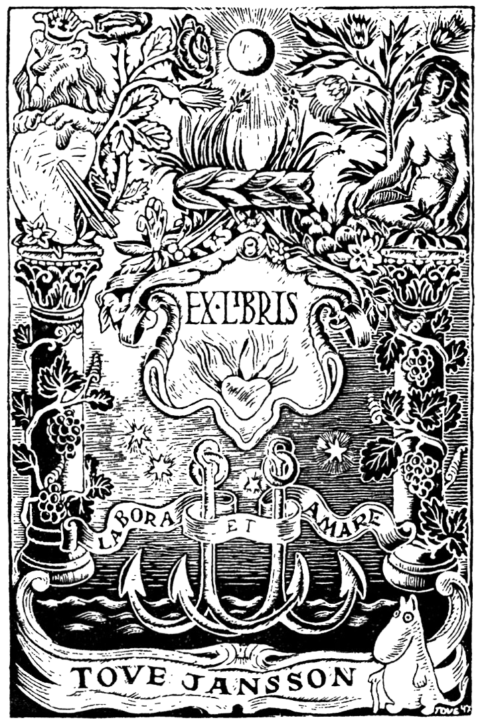
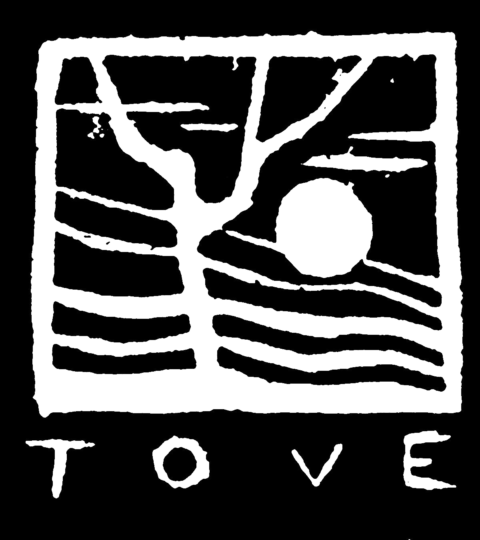
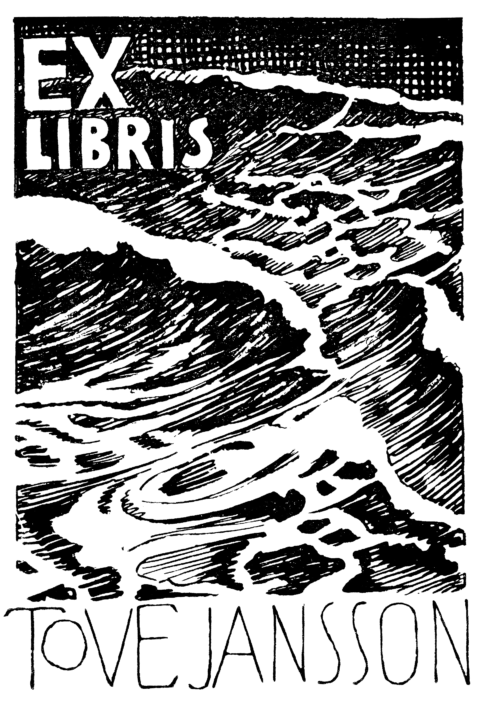
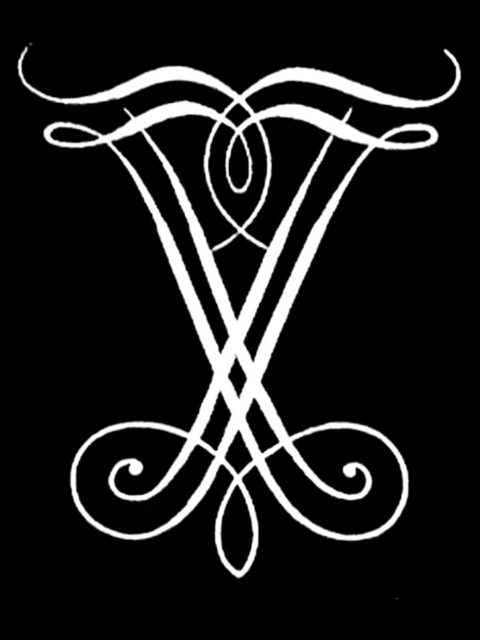
Drama
Tove Jansson relished the dynamism and shared endeavour of theatre and was involved in writing and designing numerous Moomin plays for children – from Comet in Moominland at Helsinki’s Swedish Theatre in 1949 (directed by Vivica Bandler) to the Muumi Ooppera (composed by Ilkka Kuusisto) at the Finnish National Opera house in 1974. She had earlier designed costumes and stage settings for the fantasy ballet Pessi and Illusia, which was performed at the Finnish National Opera (1952).
The Songwriter
Through the 1970s and 1980s, Tove Jansson also worked on many TV and radio productions. A talented lyricist, her song Höstvisa (Autumn Song), set to music in 1965 by Erna Tauro, has been interpreted by many Scandinavian artists, including Cumulus, Bo Andersson, Vikingarna and Zarah Leander. The song tells about the urgency to love while there’s still the chance and perhaps finding a love that was thought lost.
Love and Friendship
In the 1930s and 1940s, Tove Jansson moved within a progressive, bohemian circle of fellow artists and writers in Helsinki. The most significant of her early relationships were with the abstract painter Sam Vanni and with Atos Wirtanen, a philosopher, journalist and left-wing politician with whom she discussed marriage. But in 1945, while involved with Wirtanen, Tove was swept into a passionate affair with Vivica Bandler, a married theatre director. Her first same-sex relationship came as a joy and revelation to Tove Jansson, but was cut short when Vivica Bandler moved to Paris and towards other women. Their secret love (same-sex relationships were illegal in Finland until 1971) is referenced in Finn Family Moomintroll as the bond between ‘Thingumy’ and ‘Bob’ – more recognisable in Swedish as ‘Tofslan’ and ‘Vifslan’. The affair is vividly evoked in the film Tove (2020), directed by Zaida Bergroth.
In 1955, Tove met the Finnish Graphic artist Tuulikki Pietilä (known as ‘Tooti’) and began the defining relationship of her life. In Tooti, Tove had found a freedom and truth-loving artist, traveller and trusted critic, with whom she shared a love of islands and the sea. Tuulikki Pietilä was a distinguished graphic artist and became a professor at the Academy of Arts in Helsinki. She was to provide crucial support to Tove at the height of her Moomin fame and inspired the book Moominland Midwinter and the character ‘Too-ticky’. Tove and Tooti lived in adjacent studio flats in Helsinki. They spent their summers together on the solitary, rocky island of Klovharun, where they built a cabin (though both preferred to sleep in a tent outside). Their time on the island is recalled in the book they created together, Notes from an Island (published in English 2021), and the film, Haru: Island of the Solitary (1998), based on Tooti’s Super-8 archive films.
Home and Family
Tove Jansson grew up with two powerful role models. Her mother, Signe Hammarsten Jansson (known as ‘Ham’), was an illustrator and graphic designer born and raised in Sweden, the daughter of an eminent clergyman. Her father, Viktor Jansson, was a Finnish sculptor brought up by his widowed mother who ran a haberdashery business. They met in Paris in 1910, where they both studied art, and later moved to Helsinki, where Tove Marika was born. An only child through most of her infancy (her brothers Per Olov and Lars were born six and twelve years later), Tove’s precocious talents were quickly spotted by her proud parents. She thrived in the bohemian atmosphere they fostered, playing in the studio where her father chiselled and cast his models, or drawing in charcoal while her mother inked her designs (Ham designed more than 200 Finnish postal stamps).
Her brothers were similarly influenced by their parents’ cosmopolitan outlook and their interest in international literary and artistic trends. Lars Jansson was to become a published author and illustrator, while Per Olov became a writer and acclaimed photographer. The family were part of Finland’s Swedish-speaking minority and spent their summers in the predominantly Swedish-speaking Pellinge archipelago near Porvoo, a small town approximately 50km east of Helsinki.
In 1942 Tove Jansson moved away from the family home to a studio of her own in Helsinki. And two years later, she made a more definitive move to Ullanlinnankatu 1 – the turret studio where she was to live and work for the rest of her life.
Homes
- Luotsikatu 4 B, Katajanokka in Helsinki, 1914–1933
- The family moves to the artists’ home Lallukka, Apollonkatu 13, Helsinki, 1933
- Tove’s first studio, Vänrikki Stoolin katu, Helsinki, 1942
- Tove moves to a studio at Ullanlinnankatu 1, Helsinki, 1944
- Tove builds the Vindrosens hus house on Bredskär Island, 1947
- Tove builds a cottage on Klovharun Island, 1964–1965
Islands and travels
The sea, islands and coast are recurring motifs in Tove Jansson’s art and provide the setting for many of her Moomin stories and works of adult fiction. Her love of the sea was forged in her childhood when she would spend summers with her mother’s family in their villa in the Stockholm archipelago and later on the Finnish Pellinge island. As a teenager, Tove Jansson built a cabin on an islet off the coast, but her dream was for an island of her own (Finland has multitudes of islands). This dream was realised, with her brother Lars, in the 1950s, when they leased an island in the Pellinge archipelago, and each built a cabin to spend the summer months. This island was also the inspiration of The Summer Book.
In 1964, as she turned 50, Tove Jansson moved with her partner Tooti (Tuulikki Pietilä) to Klovharun, an uninhabited and almost barren skerry at the edge of the Pellinge archipelago. Here they spent the following twenty-six summers. The island is movingly evoked in Tove and Tooti’s memoir, Notes from an Island (in English in 2021), and aspects of it feature in many stories, notably Moominpappa at Sea (in English in 1966), the adult novel Fair Play (in English in 2007), and various short stories.
Tove Jansson was an avid and undaunted traveller. As a young woman she gained scholarships to study art in both Stockholm and Paris. In the months before World War II, she travelled solo across France to Italy, where she lived and breathed Renaissance painting, and on to Germany, eking out her budget by staying in cheap boarding houses. In later years she and Tuulikki Pietilä would seize every opportunity to travel and often revisited Paris, Spain and Greece together. In 1971–72, following an invitation to visit Japan on Moomin business, they set out on a world tour, taking in Japan, Hawaii, the USA and Mexico. Tooti recorded the trip on her Super-8 camera – home movies that were later edited into a film called Travels with Tove (1993). Further films of their travels were later released as Tove and Tooti in Europe (2004).
Education
Education
- Läroverket för gossar och flickor (an educational institution for boys and girls), also known as Brobergska samskolan, Helsinki 1921–1930
- Tekniska skolan / Technical School (Konstfack), Stockholm 1930–1933
- Finnish Art Society’s Drawing School (Ateneum), Helsinki 1933–1937
- Free Art School (Vapaa taidekoulu), Helsinki 1937
- L’Atélier Holy and École des Beaux-Arts, Paris 1938
- Comic-strip drawing studies at Fleet Street in London 1953
Prizes and Awards
In a career spanning seventy years, Tove Jansson was awarded numerous honours and literary prizes, including the Svenska Akademiens stora pris, the most prestigious prize awarded by the Swedish Academy, and the Hans Christian Andersen Medal, for her contribution to children’s literature.
Since 2020, Tove Jansson’s birthday has been designated an official flag day in Finland in celebration of her achievements and her contributions to Finnish art and culture.
Awards
- Ducat Prize, the Finnish Art Society’s prize for young artists, 1938 and 1953
- Nominated as ‘Nordens mest humoristiska tecknare’ (the most humorous Nordic drawer) in Sweden 1941
- Svenska Dagbladet Prize for Finland-Swedish literature 1952
- Nils Holgersson Plaque for The Book about Moomin, Mymble and Little My 1953
- Elsa Beskow Plaque and Rudolf Koivu Prize for Moominland Midwinter 1958
- Stockholms-Tidningen Culture Prize 1963
- Finnish State Prize for Literature 1963
- Anni Swan Medal for Tales from Moominvalley 1964
- Hans Christian Andersen Award for her contribution to children’s literature 1966
- Expressen’s Heffaklumpen Prize (shared with Astrid Lindgren) 1970
- Mårbacka Prize and the Swedish Academy’s Finland Prize 1972
- Albert Gebhard Medal 1973
- Pro Finlandia Medal 1976
- Stiftelsen litteraturfrämjandets stora pris (a Swedish literary prize awarded by the Litteraturfrämjandet foundation) 1977
- Honorary Doctorate, Åbo Akademi 1978
- Helsinki Culture Award 1980
- Finnish State Prize for Literature 1983
- Selma Lagerlöf Prize 1992
- Finland Art Prize 1993
- The Swedish Academy Prize 1994
- Honorary Professorship 1995
Press Kit
Terms of image use
The photographs available in this Press Kit may be used only for editorial material about Tove Jansson’s life and work. The following copyright line must be displayed in connection with all images: © Moomin Characters™. For any other purpose, such as use on commercial products, a separate license is required. For more information, please contact Moomin Characters Oy Ltd

